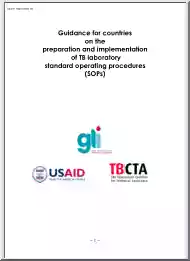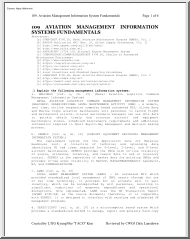No comments yet. You can be the first!
What did others read after this?
Content extract
NAVAIR News Release COMFRC Public Affairs Patuxent River, MD November 10, 2016 Production leads, program managers meet to advance CCPM across all FRCs Rear Adm. Michael Zarkowski, Commander, Fleet Readiness Centers (COMFRC), spoke to production and Naval Air Systems Command (NAVAIR) representatives Nov. 2 on how the introduction of a software solution that will improve readiness.(US Navy Photo/Released) NAVAL AIR SYSTEMS COMMAND, PATUXENT RIVER, Md. – Increasing speed to the fleet with the utilization of Critical Chain Project Management (CCPM) was the main topic of discussion at the Commander, Fleet Readiness Centers (COMFRC) off-site held at the Southern Maryland Higher Education Center in California, Maryland, Nov. 2-3 More than 50 representatives from Naval Air System Command (NAVAIR) program offices (PMA) and FRC production were in attendance focusing on alignment, standardization and communication. CCPM, which currently is in place at all three major depot maintenance sites,
is a Theory of Constraints-based, project management solution that uses a systems-view approach to account for variability and resources required to execute all maintenance and repairs and de-conflicts resource contentions in the planning stage, COMFRC Aviation Maintenance and Material Director Ann Wood said. “CCPM accounts for variability within projects and uses back scheduling methodology to manage across the entire portfolio of projects, protecting the delivery date to the customer by incorporating project-level buffers. It provides cross-project solutions to prioritize tasks and resources.” Page 1 of 3 http://www.navairnavymil/indexcfm?fuseaction=homeNAVAIRNewsStory&id=6421 301-757-7178 NAVAIR News Release COMFRC Public Affairs Patuxent River, MD November 10, 2016 Production leads, program managers meet to advance CCPM across all FRCs The meeting, which was held to advance CCPM across all aircraft lines at the FRCs, focused on developing templates and buffers for
each type/model/series (TMS) aircraft, gaining consensus and a plan of action on two-year induction and production plans for each TMS, setting the groundwork for a five-year pipeline and a resource planning schedule for each TMS, and engaging the TMSs on the removal of production delays. Rear Adm. Michael Zarkowski, Commander, Fleet Readiness Center (COMFRC), who kicked off the two-day offsite, said the business of producing aircraft for the fleet is complex and that COMFRC must communicate with the customer about capability and capacity and execute solutions before readiness gaps emerge. “There are immense requirements in Naval Aviation, for component work, for aircraft and for engines. We must be able to articulate to our customers what our capacity is and what we can do for them in the future. And where there is a gap, we must work with the PMA and other stakeholders and get industry involved or reach out to the Air Force or Army for additional assistance, if necessary. “Our
responsibility is to communicate and then deliver what the fleet requires. we are taking today will help answer that,” he said. The steps 2016 saw FRCs make inroads into reducing readiness gaps, Zarkowski said. “The numbers of aircraft deliveries are up. And your hard work isn’t only reflected in the number of aircraft we delivered,” he said. “Many of those airframes had complex fixes For example, the F/A-18 A-D Hornets required an additional 1,100 maintenance man-hours on average per aircraft than they did in 2015.” Using technology, he said, will provide the enterprise with enabling visibility into production and its inherent constraints. He also said that Concerto, a CCPM software solution for managing multiple projects, will be used at all maintenance sites by the end of 2017. “We use our personal devices to track our purchases and monitor schedules. In our personal lives, we expect real time information. Why wouldn’t we expect that in the business of Naval
Aviation so that it runs efficiently and effectively? With Concerto, we can collaboratively look at near real time status of aircraft. It also highlights where the constraints are and informs leadership on where to move resources across the enterprise.” Martin Ahmad, who became COMFRC’s deputy in September 2016, also spoke at the event and echoed Zarkowski’s comments on communication and visibility on aircraft readiness across the enterprise. “Naval Aviation readiness is centered at the FRCs We are the ones responsible for getting aircraft back on the flight line. We have to reach out and make sure that we are communicating and working with organizations and entities that affect us that so that resources are available to do the job.” While CCPM methodologies have been in use at FRCSE for a couple of years, FRC SE Page 2 of 3 http://www.navairnavymil/indexcfm?fuseaction=homeNAVAIRNewsStory&id=6421 301-757-7178 NAVAIR News Release COMFRC Public Affairs Patuxent River,
MD November 10, 2016 Production leads, program managers meet to advance CCPM across all FRCs Aviation Maintenance/Material Production director Holly Martinez said the meeting ensured that the FRCs and integrated program team (IPT) leads all heard the same message. “Now we all know where we are going in the future,” she said. “Concerto will get all of us on a level playing field. It will make data integrity ‘spot on’ and increase our confidence in the real-time data. “With this, information we will better communicate with the customer on the ‘what and whys’ of production and show them how they can be part of the solution.” Sandie Brazda, AV-8B IPT lead, agreed. “Pulling together the customer, IMC [Integrated Maintenance Concept] coordinators and the program office is critical to [FRC] throughput,” she said. “We now all have a better appreciation of what CCPM is and how it improves our business acumen.” Martin Ahmad, Commander for Fleet Readiness Centers
(COMFRC)deputy, spoke to more than 50 representatives from Naval Air System Command (NAVAIR) program offices and FRCs on how using Critical Chain Project Management (CCPM) will increase speed to the fleet and enhance their business acumen.(US Navy Photo/Released) Page 3 of 3 http://www.navairnavymil/indexcfm?fuseaction=homeNAVAIRNewsStory&id=6421 301-757-7178
is a Theory of Constraints-based, project management solution that uses a systems-view approach to account for variability and resources required to execute all maintenance and repairs and de-conflicts resource contentions in the planning stage, COMFRC Aviation Maintenance and Material Director Ann Wood said. “CCPM accounts for variability within projects and uses back scheduling methodology to manage across the entire portfolio of projects, protecting the delivery date to the customer by incorporating project-level buffers. It provides cross-project solutions to prioritize tasks and resources.” Page 1 of 3 http://www.navairnavymil/indexcfm?fuseaction=homeNAVAIRNewsStory&id=6421 301-757-7178 NAVAIR News Release COMFRC Public Affairs Patuxent River, MD November 10, 2016 Production leads, program managers meet to advance CCPM across all FRCs The meeting, which was held to advance CCPM across all aircraft lines at the FRCs, focused on developing templates and buffers for
each type/model/series (TMS) aircraft, gaining consensus and a plan of action on two-year induction and production plans for each TMS, setting the groundwork for a five-year pipeline and a resource planning schedule for each TMS, and engaging the TMSs on the removal of production delays. Rear Adm. Michael Zarkowski, Commander, Fleet Readiness Center (COMFRC), who kicked off the two-day offsite, said the business of producing aircraft for the fleet is complex and that COMFRC must communicate with the customer about capability and capacity and execute solutions before readiness gaps emerge. “There are immense requirements in Naval Aviation, for component work, for aircraft and for engines. We must be able to articulate to our customers what our capacity is and what we can do for them in the future. And where there is a gap, we must work with the PMA and other stakeholders and get industry involved or reach out to the Air Force or Army for additional assistance, if necessary. “Our
responsibility is to communicate and then deliver what the fleet requires. we are taking today will help answer that,” he said. The steps 2016 saw FRCs make inroads into reducing readiness gaps, Zarkowski said. “The numbers of aircraft deliveries are up. And your hard work isn’t only reflected in the number of aircraft we delivered,” he said. “Many of those airframes had complex fixes For example, the F/A-18 A-D Hornets required an additional 1,100 maintenance man-hours on average per aircraft than they did in 2015.” Using technology, he said, will provide the enterprise with enabling visibility into production and its inherent constraints. He also said that Concerto, a CCPM software solution for managing multiple projects, will be used at all maintenance sites by the end of 2017. “We use our personal devices to track our purchases and monitor schedules. In our personal lives, we expect real time information. Why wouldn’t we expect that in the business of Naval
Aviation so that it runs efficiently and effectively? With Concerto, we can collaboratively look at near real time status of aircraft. It also highlights where the constraints are and informs leadership on where to move resources across the enterprise.” Martin Ahmad, who became COMFRC’s deputy in September 2016, also spoke at the event and echoed Zarkowski’s comments on communication and visibility on aircraft readiness across the enterprise. “Naval Aviation readiness is centered at the FRCs We are the ones responsible for getting aircraft back on the flight line. We have to reach out and make sure that we are communicating and working with organizations and entities that affect us that so that resources are available to do the job.” While CCPM methodologies have been in use at FRCSE for a couple of years, FRC SE Page 2 of 3 http://www.navairnavymil/indexcfm?fuseaction=homeNAVAIRNewsStory&id=6421 301-757-7178 NAVAIR News Release COMFRC Public Affairs Patuxent River,
MD November 10, 2016 Production leads, program managers meet to advance CCPM across all FRCs Aviation Maintenance/Material Production director Holly Martinez said the meeting ensured that the FRCs and integrated program team (IPT) leads all heard the same message. “Now we all know where we are going in the future,” she said. “Concerto will get all of us on a level playing field. It will make data integrity ‘spot on’ and increase our confidence in the real-time data. “With this, information we will better communicate with the customer on the ‘what and whys’ of production and show them how they can be part of the solution.” Sandie Brazda, AV-8B IPT lead, agreed. “Pulling together the customer, IMC [Integrated Maintenance Concept] coordinators and the program office is critical to [FRC] throughput,” she said. “We now all have a better appreciation of what CCPM is and how it improves our business acumen.” Martin Ahmad, Commander for Fleet Readiness Centers
(COMFRC)deputy, spoke to more than 50 representatives from Naval Air System Command (NAVAIR) program offices and FRCs on how using Critical Chain Project Management (CCPM) will increase speed to the fleet and enhance their business acumen.(US Navy Photo/Released) Page 3 of 3 http://www.navairnavymil/indexcfm?fuseaction=homeNAVAIRNewsStory&id=6421 301-757-7178




 When reading, most of us just let a story wash over us, getting lost in the world of the book rather than paying attention to the individual elements of the plot or writing. However, in English class, our teachers ask us to look at the mechanics of the writing.
When reading, most of us just let a story wash over us, getting lost in the world of the book rather than paying attention to the individual elements of the plot or writing. However, in English class, our teachers ask us to look at the mechanics of the writing.